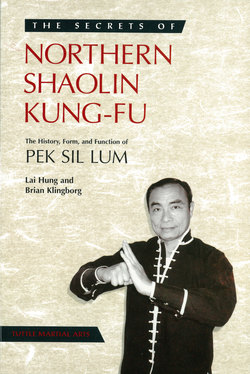Читать книгу Secrets of Northern Shaolin Kung-fu - Brian Klingborg - Страница 6
ОглавлениеAcknowledgments
Sincere thanks are owed to all those who contributed their time, expertise, and enthusiasm to this book, especially: Sifu Mark Poppendiek of the UC Davis LHCMAI and Sifu Gary Tang of the Richmond LHCMAI—both of whom offered valuable advice on the text, helped with the tortuously complicated photography process, and shared insight and knowledge gained from more than twenty years with Lai Hung; Harriet Lai, for her invaluable help with translation; Michael Henry, for contributing to the photography; Mark V. Wiley, for seeing potential in the initial manuscript and for guiding me along the way; and above all, my wife, Lanchi, for her encouragement, patience, and support, and also for letting me hog the computer!
In my collaboration with Lai Hung, I provided the written words and he provided the martial expertise. Although I have done my utmost to present Lai Hung’s considerable knowledge as accurately as possible, any defects or errors contained within the following pages are due solely to my incomplete grasp of his teachings rather than to any imperfections in Lai Hung’s mastery of the Pek Sil Lum art.
A Note on the Text
A variety of dialects are spoken in China, two of the most widespread being Mandarin and Cantonese. Since the majority of Chinese martial arts instructors currently teaching in the United States and Europe have their ancestral roots in the province of Kwangtung, they are primarily Cantonese speakers, and as such, Cantonese tends to be the dialect used when referring to martial arts techniques in the Chinese language. Most of the terms in this book, however, are presented in Mandarin, because that is the dialect with which I am most familiar. There are several types of pronunciation guides available for rendering Mandarin into phonetic symbols, but I have chosen to use the Wade-Giles system of Romanization. Notable exceptions to this rule are the name of Lai Hung and the term Pek Sil Lum, both of which are presented in their Cantonese form.
